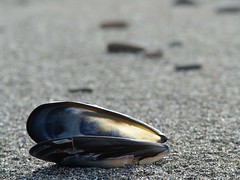Sometimes, we have another use for backstory. I’ve seen this especially in women’s fiction and literary novels, though that may not be the only place it’s used. The present plot revolves around the backstory—and figuring out just what happened.
 Okay, so that sounds a lot like a mystery. And, in a sense it is—sometimes the it’s even about discovering who really killed a victim. However, in these stories, usually it’s less about righting the wrong and showing good triumph over evil and more about finding meaning in life.
Okay, so that sounds a lot like a mystery. And, in a sense it is—sometimes the it’s even about discovering who really killed a victim. However, in these stories, usually it’s less about righting the wrong and showing good triumph over evil and more about finding meaning in life.
I’ve heard about a number of books that sound like they have the same kind of plot structure, but of the books I’ve read, the best example that springs to mind is The Secret Life of Bees by Sue Monk Kidd.
Now, throughout this series, we’ve talked about all the many ways backstory is so bad because we’re condemning the character/plot/conflict to be less compelling than something set in the present. So how can all these stories get published if they’re so focused on the backstory?
Let’s look at the structure of The Secret Life of Bees for some ideas. (No spoilers.)
- The story does have action in the present. The backstory mystery—who killed Lily’s mother, Deborah—is introduced first, but we quickly get to see the conflict in the present: Lily doesn’t get along with T. Ray (her father), and there’s also the historical backdrop of civil rights.
- The backstory fuels the main character’s quest.
- The backstory is important to the character—and the reader.
- The POV character doesn’t know the backstory—it’s a mystery to her. While I think this is the most popular mode, this varies in some books, though: sometimes the POV character knows but doesn’t want to think about it.
- What is probably key (and many thanks to my friend Sarah for helping me hash this out/saying it herself): The backstory—and the journey to discover the backstory—is the plot: the character’s growth comes in her decision to reconcile herself with her past and move on to the future.
What do you think? Have you read a book like this? Why did it work (or not)?
Photo by Marie Richie


